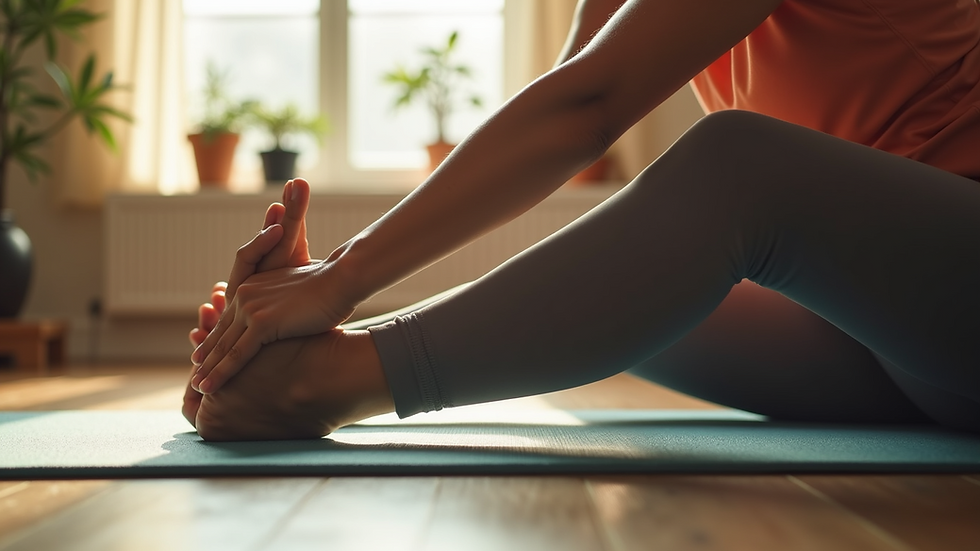How Creative Movement Enhances Healing
- Lauren Mickle

- Jul 14
- 4 min read
Creative movement is more than just dance or exercise; it's a powerful tool for healing. Engaging in movement can promote physical, emotional, and mental well-being. Whether you are someone healing from trauma, stress, or simply looking to enhance your overall well-being, creative movement can play a significant role in your recovery.
Understanding Creative Movement
Creative movement refers to the use of bodily movement as a medium of expression and communication. It allows individuals to explore not only their emotions but also their physicality. This exploration can lead to a deeper understanding of oneself and can foster healing in various ways.
Research indicates that engaging in creative movement can significantly reduce stress levels and promote emotional release. A study by the American Journal of Dance Therapy found that participants reported a 70% decrease in anxiety levels after just a few sessions of creative movement. This improvement can largely be attributed to the release of endorphins, the body's natural pain relievers.

When individuals begin to express themselves through movement, they often find that they can communicate feelings that may be difficult to express verbally. This form of expression not only allows for processing emotions but can also promote a sense of community when practiced in groups.
The Connection Between Movement and Healing
The human body is designed to move. When we restrict movement, particularly during times of stress or injury, we may become trapped in our own emotions. Creative movement enables us to regain a sense of control. In therapeutic settings, physical movement has been shown to enhance emotional healing.
For example, in one study, participants suffering from chronic pain reported a significant improvement in their condition after engaging in regular movement therapy. They found that moving their bodies helped to alleviate pain as well as the emotional distress associated with it.
Moreover, creative movement also stimulates the vagus nerve, which plays a crucial role in regulating stress responses in the body. By consciously engaging in movement, we can promote relaxation and reduce anxiety.

What Are the 5 Stages in Dance Movement Therapy?
Dance movement therapy is a specific form of creative movement that focuses on integrating emotional, cognitive, physical, and social aspects of an individual. It can be broken down into five key stages:
Invitation
The initial stage involves inviting participants to move freely. This may include simple stretching or breathing exercises. The goal is to create a safe environment where individuals feel comfortable to explore their bodies.
Exploration
Participants are encouraged to explore different types of movement. This can include improvisation or structured patterns. By experimenting with motion, individuals can connect with their feelings.
Transformation
In this stage, participants begin to express their emotions through their movements. They may find themselves portraying anger, happiness, or sadness through dance.
Integration
This stage focuses on integrating the emotional experience with physical movement. Participants learn to recognize how their body communicates their emotions, forging a deeper understanding.
Closure
Finally, this stage aims to bring participants back to a state of awareness and reflection. They may share their experiences with the group or engage in calming movements.

Benefits of Creative Movement for Healing
Improves Emotional Expression
One of the primary benefits of creative movement is its ability to foster emotional expression. Many individuals find it easier to express feelings through movement rather than words. This can be particularly useful for those who have experienced trauma.
Reduces Anxiety and Stress
Engaging in rhythmic movement releases endorphins. As a result, individuals often feel a reduction in anxiety and stress levels. Incorporating rhythmic breathing with movement enhances this effect.
Enhances Body Awareness
Creative movement encourages individuals to become more in tune with their bodies. By increasing body awareness, many people discover new modalities for relaxation and stress management.
Fosters Connection
Participating in movement groups can create community and support among individuals. Sharing expressive movement with others fosters connection and understanding, which is vital during the healing process.
Facilitates Personal Growth
Through the journey of exploring movement, many individuals also find a sense of empowerment. Discovering one's own rhythm can enhance self-esteem and promote personal growth.
Getting Started with Creative Movement
If you are interested in incorporating creative movement into your healing journey, consider the following actionable recommendations:
Find a Class: Look for local classes or workshops focused on creative movement or group therapy. Participating in a structured environment can provide guidance and support.
Practice at Home: You can start small by setting aside time to move at home. Play some music that resonates with you and allow your body to express itself freely. There are numerous online resources and videos available to guide you.
Use Journaling: After each movement session, take a few moments to journal about your experiences. Write down any emotions that surface, movements that felt particularly good, or insights gained.
Seek Professional Guidance: If you are healing from specific traumas, consider working with a certified movement therapist. They can provide personalized support tailored to your individual needs.
Be Patient: Remember that the journey of healing through creative movement takes time. Allow yourself the grace to explore without judgment.
Embracing Creative Movement as a Healing Tool
Creative movement is an empowering way to enhance healing. By exploring the rhythm and flow inherent in our bodies, we can communicate beyond words, revealing hidden emotions and facilitating profound change. Whether through structured classes or spontaneous sessions at home, there exists immense potential for personal growth and healing.
The benefits of movement in therapy cannot be overstated, highlighting the connection between body and mind. As you embrace this journey, remember that each movement speaks—listen to what your body has to say.



Comments